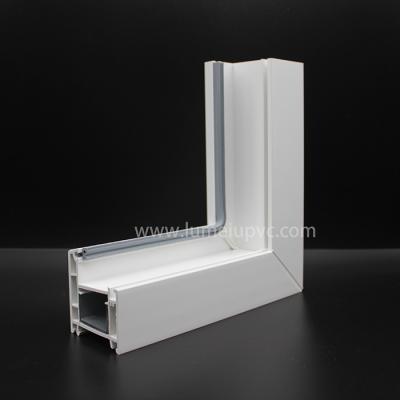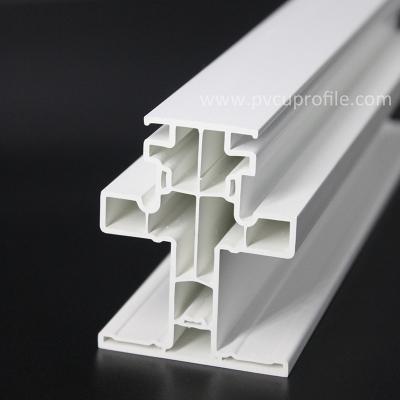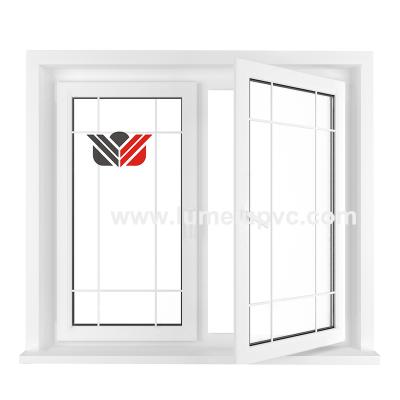How to improve the airtightness of doors and windows and reduce building energy consumption
With the continuous improvement of people's living standards, the environmental requirements for each family room are also getting higher and higher. It has become a necessary condition for people to use air conditioners for cooling in summer and heating or electric heaters for heating in winter. Therefore, the cost of cooling and heating for about six months a year is not a small financial expense for each family. The energy-saving effect of the airtightness of the building's exterior windows will directly affect the economic expenses of your family.
We take the indoor space of a single bedroom as an example to calculate the amount of air infiltration. The volume of the indoor space is about 40 cubic meters (length 4500 × width 3500 × height 2600 mm), and the area of the exterior windows of the building is about 2 square meters (width 1500 × height 1350 mm). Calculate the energy consumption of different grades of plastic windows according to the airtight performance classification index values in the national standard GB/T7101 "Classification and testing methods for airtightness of building exterior windows":
The air permeability Q 2 per unit area of a plastic window with grade 1 airtight performance is 18 cubic meters/(m 2 ·h), and the air permeability of a 2-square-meter window in one hour is 36 cubic meters, which basically can make the indoor air in one hour. Replace all once.
The air permeability Q 2 per unit area of a plastic window with grade 4 air tightness is 4.5 cubic meters/(m 2 ·h), and the air permeability of a 2 square window per hour is 9 cubic meters. It takes four hours to make the indoor air Replace all once.
Level 5 air tightness performance per cubic hour per hour Q 2 ≤ 1.5, while level 4 permeability Q 2 ≤ 4.5, level 4 is twice as much as level 5.
At the same time, we did an analogy test of 1# and 2# plastic windows of different grades: a 1300W air conditioner for cooling and heating was used in a room with a space volume of 48m3 (4m×4m×3m), and a 1# sliding window (specification 1500×1500 , the air tightness performance is grade 1, the measured penetration is 16, and the thermal insulation performance K value is 3.6) and 2# energy-saving sliding windows (same specifications, air tightness grade 5, the measured penetration volume is 1.2, and the thermal insulation performance K value is 2.7) respectively. test. In an environment with an indoor temperature of 32°C, when the indoor air conditioner is set to 20°C (normally entering and leaving the office wall without thermal insulation), it runs for 8 hours, and the power consumption of 1# window airtight performance level 1 for 8 hours is 10.73 degrees. The 8-hour power consumption of the 2# window with airtight performance level 5 is only 6.1 degrees. It can be seen that the higher the airtight performance, the lower the power consumption, on the contrary, the worse the airtight performance, the higher the power consumption. Relevant energy-saving experts emphasized three years ago that the energy consumption of building doors and windows accounts for 50% of building energy consumption, and the author believes that 50% of the energy consumption of doors and windows lies in airtight performance. It can be seen that the real key part of energy saving of doors and windows lies in air tightness. The improvement of air tightness also improves the sound insulation performance, which greatly improves the water tightness, safety, anti-fouling and dustproof.
From the above data analysis, it can be seen that the air-tightness performance of plastic windows of grade 1 and grade 4 has increased by 4 times. That is to say, the energy consumption of air-conditioning equipment differs by at least 2 times (minus the heat transfer coefficient of the wall). Calculated with a small air-conditioning equipment of 1000W, if the main body spends a few more hours in a day, it will waste a few yuan. The bedroom will waste 200-300 yuan within a year, and the temperature difference between indoor and outdoor in winter in the cold northern regions is generally above 30 ℃ (commonly known as: the hole with a big needle, the wind with a big bucket), and the energy consumption is even more serious. From the perspective of the price difference, the price of ordinary single-glass civil windows is 150 to 180 yuan per square meter, the price of medium blank glass engineering windows is between 220 and 240 yuan per square meter, and the price of patented energy-saving windows is 360 yuan/m 2 , Each square user needs to spend more than 100 yuan, but high-quality energy-saving windows are rarely maintained for 30 years, while inferior windows cost at least 200 to 300 yuan in maintenance fees for decades. The choice of low-cost and energy-saving plastic windows is purely due to small losses.
In the reality that the energy-saving effect of sliding doors and windows is generally difficult to improve, Huaian Xingfu Doors and Windows Co., Ltd., a high-tech product manufacturer in Jiangsu Province, has focused on independent research and development of "health brand" doors and windows and won four national utility model patents: "High-strength energy-saving plastic Profile sliding window sash", "energy-saving plastic sliding window", so that the patented technology energy-saving product used in the overall component profile of the "health brand" sliding window is tightly assembled, and its wind pressure resistance, air tightness, water tightness and sound insulation performance are all in the Grade 4 or above, and the thermal insulation performance is above Grade 7. This product meets the technical requirements of building energy saving of 65%. Tests show that: in a room using this door and window, each air conditioner can save 2 kWh of electricity per day. Calculated according to the national average of 180 days of cooling or heating and two units per household, the annual electricity saving per household is 720 kWh × 0.6 yuan/kWh, which can be The electricity cost is saved by 432 yuan, the quality life of the energy-saving windows is about 30 years, and the electricity cost per household can be saved by more than 12,960 yuan in 30 years.
Related Products
Submitted successfully
We will contact you as soon as possible



